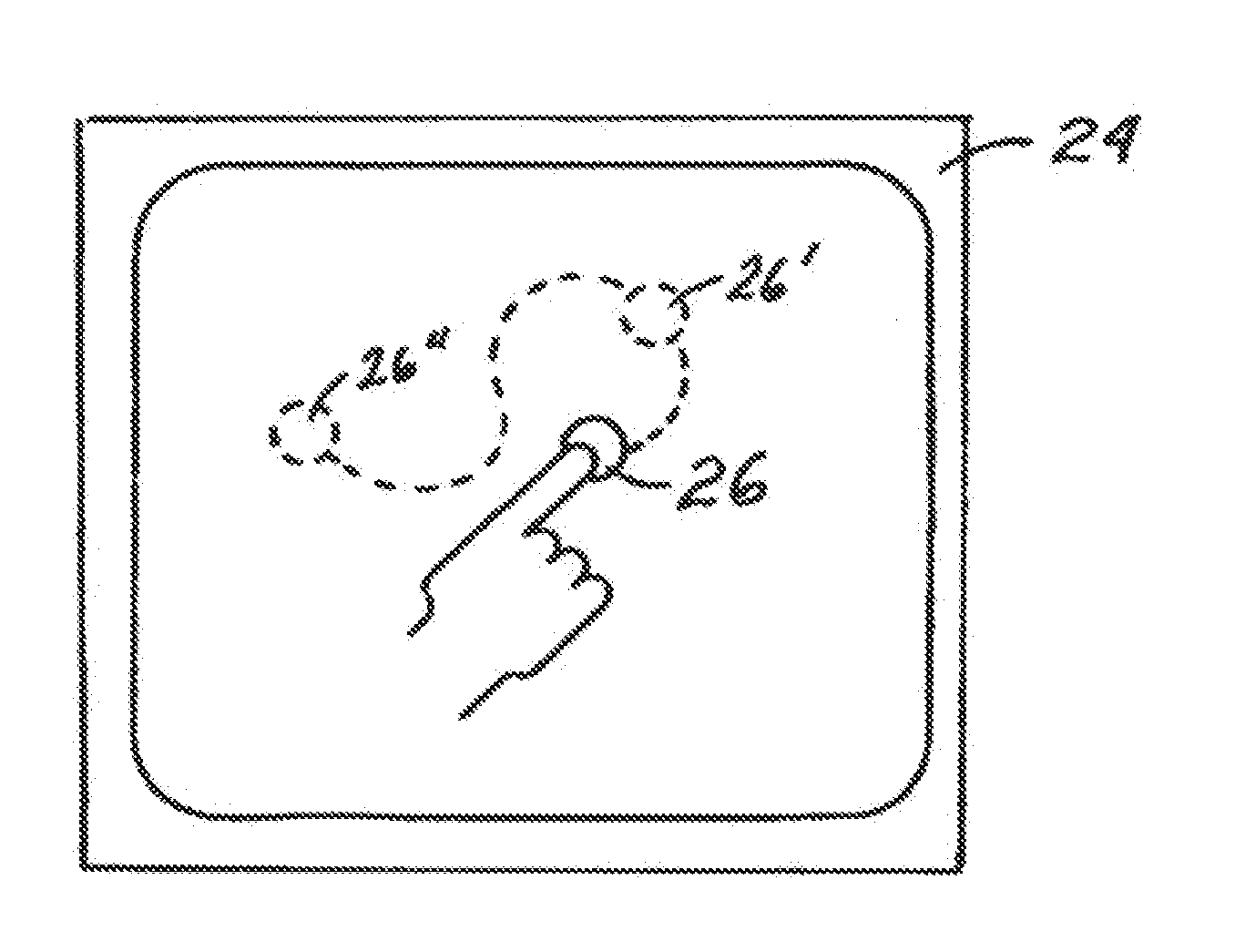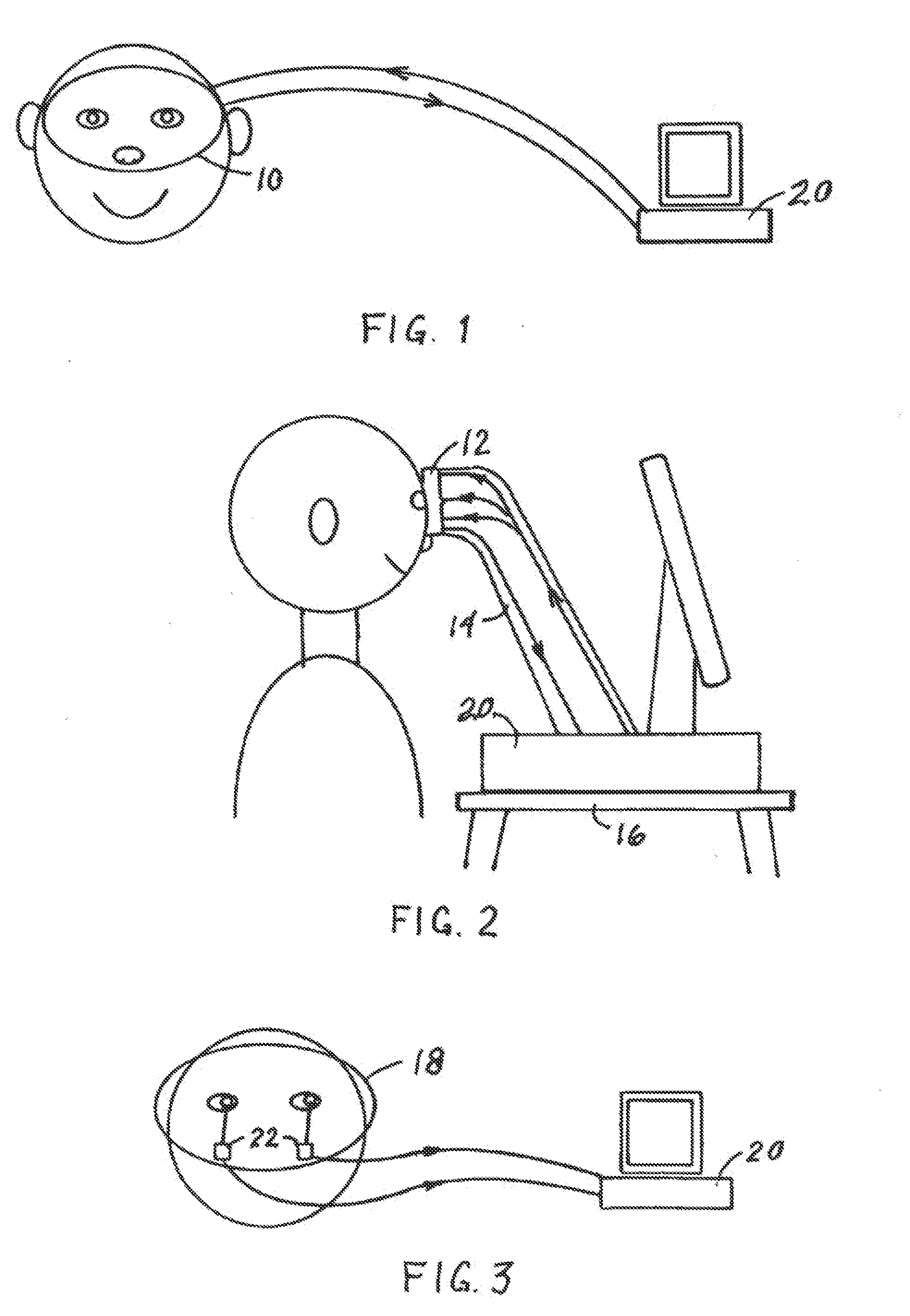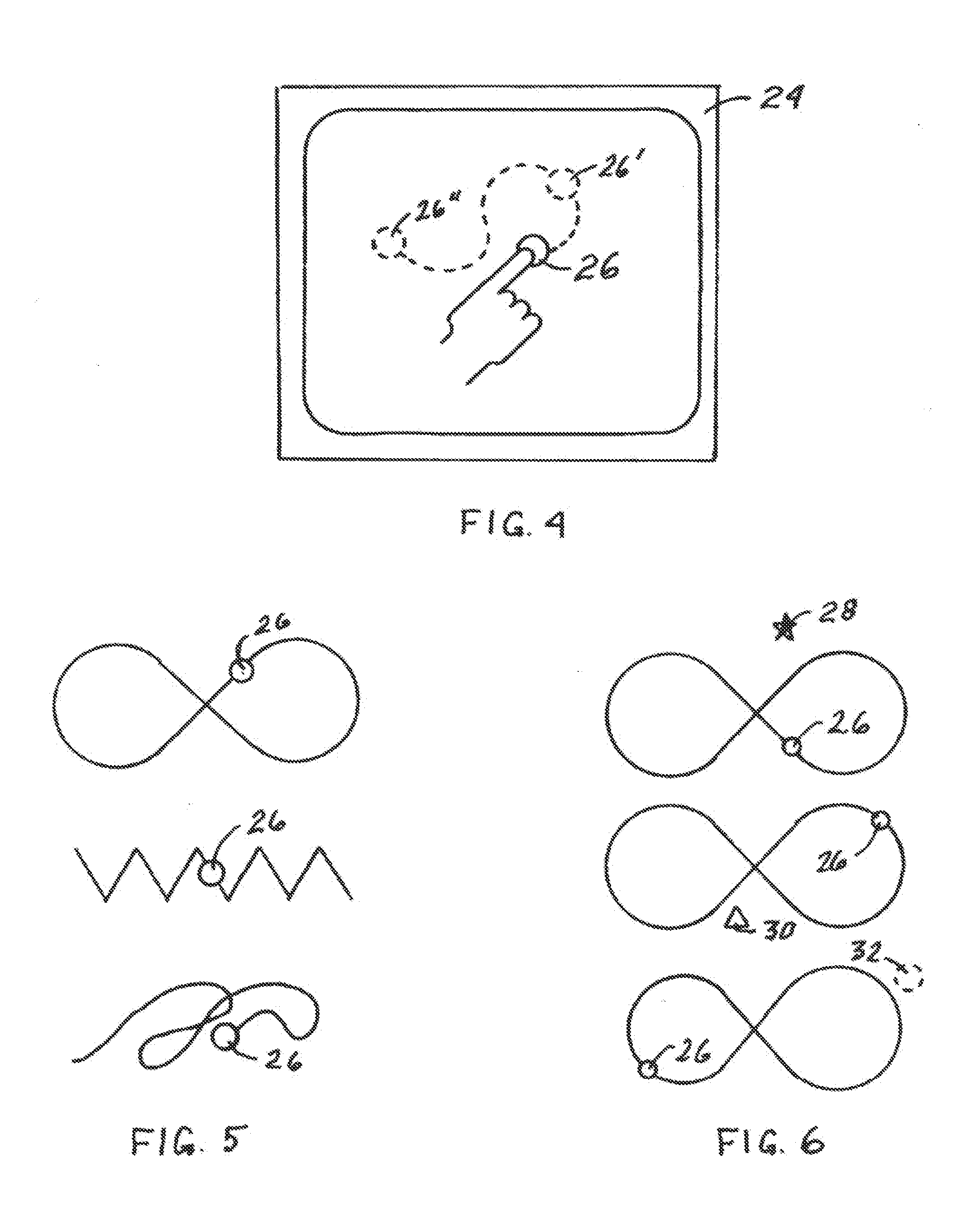Alertness testing method and apparatus
a technology of alertness and testing method, applied in the field of alertness testing method and apparatus, can solve the problems of more mundane, more catastrophic injury, and still present opportunities for injury, and the operator's life is at risk, and the patient is also at risk
- Summary
- Abstract
- Description
- Claims
- Application Information
AI Technical Summary
Benefits of technology
Problems solved by technology
Method used
Image
Examples
Embodiment Construction
[0029]The present invention measures alertness objectively, via a test protocol which can be individualized by comparing the most recent test results of an operator against a pre-established baseline for that particular operator. Or, the test performance of the operator can also be objectively measured against pre-determined standards considered essential for safe performance in his or her chosen activity.
[0030]The images presented to the test subject are designed for the test subject to follow with his or her eyes. The images thus presented, and to which the test subject's attention is directed, are designated as the “fixation icon.” The alertness test can employ either a computer-controlled head mounted display as defined herein, fitted with a gaze tracking device, or a computer with an interactive touch screen. In the former embodiment, the operator simply follows a moving icon with his or her eyes. In the latter embodiment, the operator uses finger movements to track the moving ...
PUM
 Login to View More
Login to View More Abstract
Description
Claims
Application Information
 Login to View More
Login to View More - R&D
- Intellectual Property
- Life Sciences
- Materials
- Tech Scout
- Unparalleled Data Quality
- Higher Quality Content
- 60% Fewer Hallucinations
Browse by: Latest US Patents, China's latest patents, Technical Efficacy Thesaurus, Application Domain, Technology Topic, Popular Technical Reports.
© 2025 PatSnap. All rights reserved.Legal|Privacy policy|Modern Slavery Act Transparency Statement|Sitemap|About US| Contact US: help@patsnap.com



